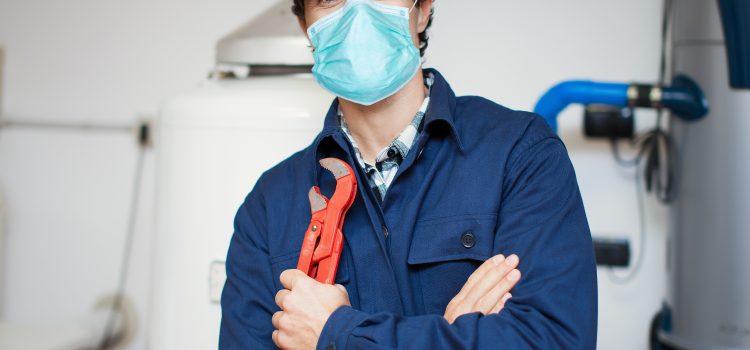Just how do you feel about DIY Plumbing Projects and When to Call a Professional?

Intro
Pipes problems can range from minor inconveniences to significant headaches, typically motivating property owners to make a decision in between taking on the trouble themselves or employing a professional plumbing. Knowing when to DIY and when to look for specialist aid can save time, money, and avoid prospective disasters. This post discovers the factors to consider when making this critical choice.
Benefits of Do It Yourself Pipes
Handling pipes jobs on your own can be rewarding in numerous ways, specifically for simpler projects.
Price Savings
DIY pipes tasks frequently save money by staying clear of expert service charge. Tasks like fixing small leaks, replacing faucets, or mounting new showerheads are examples where home owners can manage repairs without working with a plumbing.
Ability Improvement
Engaging in do it yourself plumbing uses an opportunity to learn and boost sensible skills. Basic tasks empower home owners to recognize their pipes systems much better and obtain self-confidence in handling small fixings independently.
Risks of DIY Plumbing
While do it yourself projects use benefits, certain risks need to be thoroughly considered prior to trying fixings.
Complexity of Jobs
Some plumbing issues need customized knowledge and devices beyond normal home owner capacities. Mishandling intricate problems can lead to more damages and pricey repair services.
Safety Concerns
Collaborating with plumbing systems involves risks such as direct exposure to water damage, potential for electrical risks, and taking care of tools inaccurately. Safety and security preventative measures have to be observed to prevent crashes and make sure reliable repair work.
Indicators to Call an Expert Plumbing Professional
Recognizing when a plumbing concern goes beyond DIY abilities is critical to preventing intensifying issues.
Indicators of Facility Concerns
Instances include:
Prompt expert intervention is needed to resolve these problems effectively and reduce damages.
Do It Yourself Plumbing Tips
For effective DIY plumbing, it's important to be prepared with the right tools and comply with appropriate treatments.
Standard Tools and Materials
Trick devices for DIY plumbing:
Step-by-Step Guides
Clear instructions guarantee risk-free and reliable do it yourself repairs:
Selecting the Right Time to DIY
Establishing when to take on pipes tasks on your own calls for assessing both the intricacy of the concern and personal convenience levels.
Analysis Checklist
Take into consideration:
When to Absolutely Call a Professional
Certain situations demand prompt expert interest to prevent substantial damages or safety dangers.
Examples include:
Searching for and Working With a Professional Plumbing
Selecting a qualified plumbing makes sure trustworthy service and peace of mind in dealing with pipes concerns.
Criteria for Choice
Factors to take into consideration:
Price Evaluation: do it yourself vs. Professional Solutions
Contrasting the financial implications of DIY initiatives versus professional plumbing solutions assists in making notified choices.
Financial Considerations
Assess:
Final thought
Choosing whether to do it yourself or call a professional plumber depends upon comprehending the intricacy of plumbing issues and personal capabilities. By evaluating the benefits and risks, homeowners can make educated choices that promote efficient upkeep and guard their homes from pipes catastrophes.
DIY vs. Professional Plumbing Repairs: When to Call a Pro
When dealing with plumbing issues or embarking on renovation projects, homeowners have to decide whether or not they want professional help with their home’s plumbing system. While master plumbers can complete just about any plumbing project, they can cost a pretty penny. On the other hand, DIY plumbing projects can very quickly go awry, which can make things worse.
In this blog, we’ll explore common plumbing projects that homeowners can confidently tackle, provide insights into the essential tools needed, and discuss critical DIY mistakes to avoid. Understanding these distinctions not only helps in maintaining the efficiency and longevity of your home’s plumbing system but also ensures safety and cost-effectiveness in your repair endeavors.
Installing/Replacing Certain Plumbing Fixtures
Most homeowners should be able to install new plumbing fixtures or replace old ones that are damaged or old. Using basic tools, you should be able to effectively:
Replace faucet washers or cartridges Replace showerheads Install a new toilet seat Hook up new appliances Replace hose bibbs Unclogging Drains
You should also be able to fix any clogged drains within your home by using a plunger, plumber’s snake, or natural solutions like baking soda and vinegar. These can often clear clogged sinks or bathtubs without needing professional drain cleaning assistance.
Fixing Running Toilets
Another plumbing issue many homeowners may be able to handle is a running toilet. Toilets may run more than they should due to a faulty flapper or float inside the tank. Toilet replacement parts are easy to find and often come with easy-to-follow instructions.
Repairing Leaky Faucets
A dripping faucet can not only be an annoyance, but it can also be a waste of water. Leaky faucets can normally be fixed with basic tools and a basic understanding of how they work, making them easy to fix.
Adjusting Water Heater Temperature
If you are able to follow basic safety precautions, you should be able to adjust the temperature on your hot water heater, which can improve your home’s energy efficiency and also increase comfort.
Fixing Minor Leaks in Pipes
For small plumbing leaks, particularly ones at pipe joints, using plumbing tape or a patch kit can be a temporary fix while you decide on a more permanent solution. Repairing broken pipes, however, can be more difficult and may require professional attention.

I came across that page about When to DIY and When to Call a Professional Plumber when doing a lookup on the internet. Are you aware of somebody else who is interested by the niche? Why not share it. Thanks for taking the time to read it.
Book Appointment